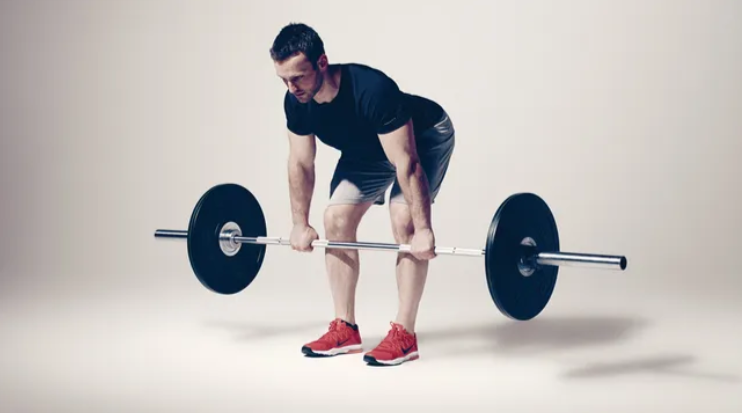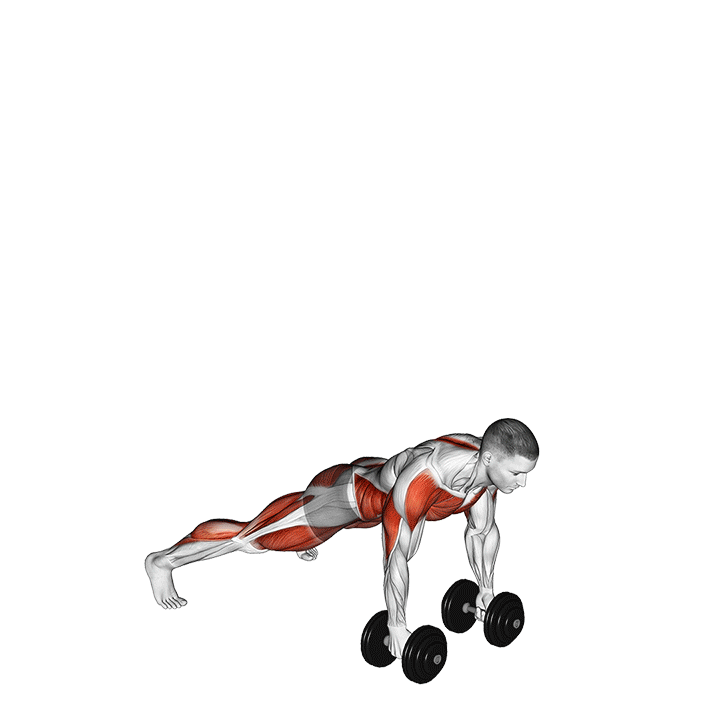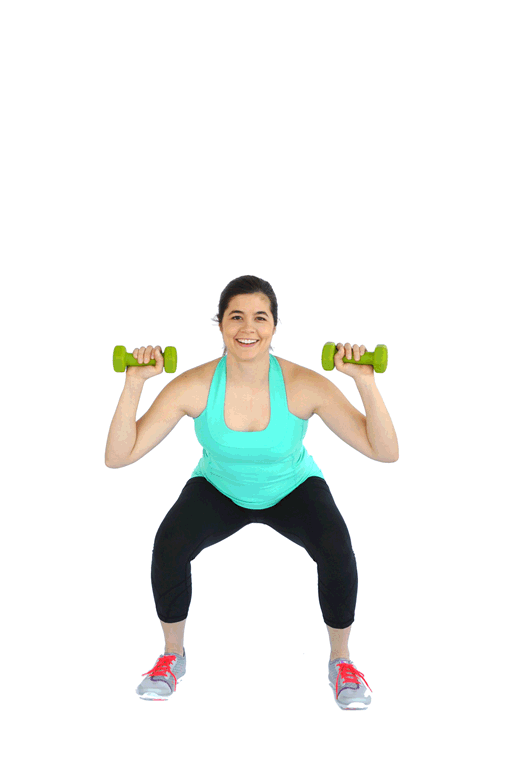Welcome to the ultimate guide on mastering the Russian Deadlift (RDL)!. Uncover the secrets of the Russian Deadlift (RDL) as you embark on a transformative fitness quest. With this comprehensive guide, tailored for beginners and seasoned lifters alike, you'll navigate the nuances of form, technique, and muscle engagement to unlock unparalleled strength and stability. From laying the groundwork of proper execution to fine-tuning your performance, each step propels you towards mastering this powerhouse exercise and elevating your fitness journey from ordinary to extraordinary.
From understanding the fundamentals to mastering proper form and execution, this guide covers everything you need to know to take your strength and stability to the next level.
Understanding the Russian Deadlift
The Russian Deadlift, often abbreviated as RDL, is a foundational exercise in strength training that targets the posterior chain muscles, including the hamstrings, glutes, and lower back. Unlike traditional deadlift variations, the RDL emphasizes the eccentric (lowering) phase of the movement, promoting muscle hypertrophy, and enhancing muscle control and stability.
Executing the Russian Deadlift correctly begins with proper form and technique. Start by standing with your feet hip-width apart and grasping the barbell with an overhand grip, hands slightly wider than shoulder-width apart. Engage your core muscles, maintain a neutral spine, and initiate the movement by hinging at the hips while keeping a slight bend in your knees. Lower the barbell towards the ground while keeping it close to your body, feeling a stretch in your hamstrings. Drive your hips forward to return to the starting position, squeezing your glutes at the top of the movement.
The benefits of incorporating the Russian Deadlift into your workout routine are numerous. By targeting the posterior chain muscles, the Russian Deadlift improves lower body strength, stability, and muscular endurance. The eccentric phase of the movement promotes muscle hypertrophy and enhances muscle control and stability, leading to greater overall functional strength.
Romanian Deadlift vs. Russian Deadlift
The Romanian Deadlift and Russian Deadlift may seem similar, but they have distinct characteristics that set them apart. The Romanian Deadlift involves a slight bend in the knees and focuses primarily on the stretch reflex of the hamstrings. In contrast, the Russian Deadlift emphasizes the hip hinge movement pattern, with less emphasis on knee flexion
|
Aspect |
Romanian Deadlift |
Russian Deadlift |
|
Description |
Involves a slight knee bend |
Emphasizes the hip hinge movement pattern |
|
Muscles Targeted |
Hamstrings, glutes, lower back |
Hamstrings, glutes, lower back |
|
Emphasis |
Stretch reflex of the hamstrings |
Hip hinge movement pattern |
|
Benefits |
Strengthening lower back, hamstrings, and glutes |
Developing hip strength and power |
|
Range of Motion |
Full range of motion with knee flexion |
Reduced range of motion with less knee flexion |
|
Common Usage |
Improving hip hinge mechanics, targeting hamstrings |
Developing hip strength and power |
|
Safety Considerations |
Maintain tension in the posterior chain throughout |
Focus on proper form and gradual progression |
Please note that while both exercises target similar muscle groups, they have distinct characteristics and emphasize different movement patterns. It's essential to understand these differences to choose the appropriate exercise based on your fitness goals and individual biomechanics.
Enhancing Glute Activation and Targeted Muscles
The Russian Deadlift is highly effective for targeting the posterior chain muscles, including the hamstrings, glutes, and lower back. By focusing on proper form and technique, you can maximize muscle activation and engagement, leading to greater gains in strength and size.
Hamstrings
The hamstrings, located at the back of the thigh, play a crucial role in hip extension and knee flexion during the Russian Deadlift. By lowering the barbell towards the ground and driving the hips forward to return to the starting position, you can effectively target and strengthen the hamstrings.
Glutes
The gluteus maximus and gluteus medius, located in the buttocks, are heavily involved in hip extension and stabilization during Russian Deadlift. Squeeze your glutes at the top of the movement to maximize activation and engagement, leading to greater gains in strength and size.
Lower Back
The lower back muscles, including the erector spinae and multifidus, work to stabilize the spine and maintain proper posture during the Russian Deadlift. Focus on maintaining a neutral spine throughout the exercise to minimize stress on the lower back and maximize muscle activation.
By incorporating the Russian Deadlift into your workout routine and focusing on proper form and technique, you can effectively target the posterior chain muscles, leading to greater gains in strength, size, and overall performance.
How to Perform Russian Deadlifts?
Proper form and technique are fundamental aspects of performing the Russian Deadlift (RDL) effectively and safely. Mastering the correct execution of this exercise not only maximizes its benefits but also reduces the risk of injury. Let's delve into the detailed steps for achieving proper form and technique:
Setup and Positioning
Begin by positioning yourself properly. Stand with your feet hip-width apart, ensuring they are parallel to each other. The barbell should be placed directly in front of you on the ground. Maintain a slight bend in your knees to avoid locking them out completely, which helps in stabilizing your lower body.
Grip and Hand Placement
Grasp the barbell with an overhand grip, with your hands slightly wider than shoulder-width apart. Ensure your grip is firm but not overly tight, allowing for a secure hold on the barbell throughout the movement.
Engage the Core
Before initiating the movement, engage your core muscles to stabilize your spine. This core engagement is essential for maintaining proper posture and protecting your lower back during the exercise.
Initiate the Movement
Begin the Russian Deadlift by hinging at the hips while maintaining the natural curvature of your spine. Avoid rounding or arching your lower back excessively, as this can lead to strain or injury. Keep your chest up and your shoulders pulled back throughout the movement.Lowering Phase
As you hinge at the hips, lower the barbell towards the ground by pushing your hips back. Keep the barbell close to your body throughout the movement, maintaining a straight line from your shoulders to your hips. Focus on feeling a stretch in your hamstrings as you lower the weight, ensuring they remain engaged throughout the exercise.Maintain a Neutral Spine
Throughout the entire movement, it's crucial to maintain a neutral spine position. Avoid excessive rounding or arching of the lower back, as this can increase the risk of injury. Keep your head in line with your spine, with your gaze focused slightly ahead of you.Drive Through the Hips
Once you reach the bottom position, drive your hips forward to return to the starting position. Squeeze your glutes at the top of the movement to fully engage the posterior chain muscles. Maintain control as you lift the barbell, focusing on the contraction of your hamstrings and glutes.Breathing
Coordinate your breathing with the movement. Inhale as you lower the barbell towards the ground, and exhale forcefully as you drive your hips forward to return to the starting position. This rhythmic breathing pattern helps stabilize your core and enhances overall performance.Control and Stability
Throughout the entire exercise, focus on maintaining control and stability. Avoid using momentum to lift the barbell, as this can compromise form and increase the risk of injury. Instead, concentrate on engaging the targeted muscle groups and moving through the full range of motion with precision.By following these detailed steps for proper form and technique, you can perform the Russian Deadlift effectively and safely, maximizing its benefits for lower body strength, stability, and muscular development. Remember to start with lighter weights to master the movement pattern before gradually increasing the load as you become more proficient.
Common Mistakes to Avoid
Several common mistakes can compromise the effectiveness of the Russian Deadlift and increase the risk of injury. Avoid these common errors to ensure proper form and technique:
Rounding the Lower Back
Maintaining a neutral spine is crucial for protecting the lower back during the RDL. Avoid rounding or arching the lower back, as this can place excessive stress on the spine and increase the risk of injury.
Using Momentum
Focus on performing each repetition with control and precision, avoiding the use of momentum to lift the weight. Concentrate on engaging the targeted muscle groups throughout the entire range of motion.Allowing the Barbell to Drift Away from the Body
Keep the barbell close to your body throughout the movement to minimize stress on the lower back and maximize muscle engagement. Avoid allowing the barbell to drift away from your body, as this can compromise form and technique.
By avoiding these common mistakes and focusing on proper form and technique, you can maximize the effectiveness of the Russian Deadlift and minimize the risk of injury.
Programming Considerations and Benefits
Programming the Russian Deadlift into your workout routine requires careful consideration of factors such as training experience, fitness goals, and overall strength levels. Beginners should start with lighter weights and focus on mastering proper form before progressing to heavier loads. Aim to perform 3-4 sets of 8-12 repetitions, adjusting the weight and volume based on individual capabilities.
Advanced lifters can incorporate higher intensity techniques like drop sets or tempo variations to continue challenging their muscles and promoting growth. By progressively overloading the muscles with heavier weights or increased volume, you can continue to see improvements in strength, size, and overall performance.
When programming the Russian Deadlift into your workout routine, several considerations and benefits need to be taken into account to ensure optimal results and safety:
Training Experience and Fitness Goals
Consideration should be given to the individual's training experience and fitness goals when programming Russian Deadlifts. Beginners should start with lighter weights and focus on mastering proper form and technique before progressing to heavier loads. It's essential to build a solid foundation of strength and technique to prevent injuries and ensure long-term progress. Advanced lifters, on the other hand, can incorporate higher intensity techniques like drop sets or tempo variations to continue challenging their muscles and promoting growth.
Reps and Sets
For beginners, aim to perform 3-4 sets of 8-12 repetitions of Russian Deadlifts. This rep and set range allow for sufficient volume to stimulate muscle growth while focusing on mastering the movement pattern. As strength and technique improve, you can gradually increase the weight and adjust the rep and set range accordingly. Advanced lifters may benefit from higher intensity techniques and may choose to vary their rep and set schemes based on their specific goals and training preferences.
Progressive Overload
Progressive overload is essential for continued progress and muscle growth when performing Russian Deadlifts. This involves gradually increasing the weight or volume over time to continually challenge the muscles and stimulate adaptation. Beginners should focus on increasing the weight gradually as strength improves, while advanced lifters may incorporate more advanced techniques like intensity techniques or varying rep ranges to continue progressing.
Benefits Beyond Muscle Strength
Incorporating Russian Deadlifts into your workout routine offers numerous benefits beyond just building muscle strength. By targeting the posterior chain muscles, including the hamstrings, glutes, and lower back, the RDL improves overall athleticism and enhances functional movement patterns. This can translate to improved performance in various sports and activities, as well as reduced risk of injury during physical activities. Additionally, the eccentric phase of the movement promotes muscle hypertrophy and enhances muscle control and stability, leading to greater overall functional strength and performance in daily activities.
Designing an Effective Russian Deadlift Program
When designing a Russian Deadlift program, consider factors such as your training experience, fitness goals, and overall strength levels. Beginners should start with lighter weights and focus on mastering proper form before gradually increasing the load. Advanced lifters can incorporate higher intensity techniques like drop sets or tempo variations to continue progressing.
Here's a 1-week workout plan designed to progress from beginners to advanced levels:
Day 1: Full-Body Strength Training (Beginner)
- Warm-up: 5-10 minutes of light cardio (e.g., jogging, cycling)
- Squats: 3 sets of 10 reps
- Push-ups: 3 sets of 8-10 reps
- Bent-over Rows: 3 sets of 10 reps
- Dumbbell Shoulder Press: 3 sets of 10 reps
- Plank: 3 sets, hold for 30 seconds each
- Cool-down: 5-10 minutes of stretching
Day 2: Cardio and Core (Intermediate)
- Warm-up: 5-10 minutes of light cardio
- Jumping Jacks: 3 sets of 30 seconds
- Mountain Climbers: 3 sets of 30 seconds
- Bicycle Crunches: 3 sets of 15 reps per side
- Russian Twists: 3 sets of 15 reps per side
- Side Planks: 3 sets, hold for 30 seconds each side
- Cool-down: 5-10 minutes of stretching
Day 3: Lower Body Strength (Intermediate)
- Warm-up: 5-10 minutes of light cardio
- Deadlifts: 3 sets of 8 reps
- Lunges (bodyweight or weighted): 3 sets of 10 reps per leg
- Leg Press: 3 sets of 10 reps
- Calf Raises: 3 sets of 15 reps
- Hamstring Curls (machine or stability ball): 3 sets of 10 reps
- Cool-down: 5-10 minutes of stretching
Day 4: Rest or Active Recovery
- Take a day off from structured exercise, or engage in light activities such as walking, yoga, or swimming to promote recovery.
Day 5: Upper Body Strength (Intermediate)
- Warm-up: 5-10 minutes of light cardio
- Bench Press (barbell or dumbbells): 3 sets of 8-10 reps
- Pull-ups or Lat Pulldowns: 3 sets of 8-10 reps
- Dumbbell Rows: 3 sets of 10 reps per arm
- Overhead Triceps Extensions: 3 sets of 10 reps
- Bicep Curls: 3 sets of 10 reps
- Cool-down: 5-10 minutes of stretching
Day 6: HIIT (High-Intensity Interval Training) (Advanced)
- Warm-up: 5-10 minutes of light cardio
- HIIT Circuit: Perform each exercise for 30 seconds, followed by 15 seconds of rest. Repeat the circuit 3-4 times.
- Burpees
- High Knees
- Jump Squats
- Push-ups
- Mountain Climbers
- Cool-down: 5-10 minutes of stretching
Day 7: Strength and Power (Advanced)
- Warm-up: 5-10 minutes of light cardio
- Power Cleans: 5 sets of 5 reps
- Box Jumps: 5 sets of 5 reps
- Bench Press: 5 sets of 5 reps (increase weight each set)
- Deadlifts: 5 sets of 5 reps (increase weight each set)
- Plyometric Push-ups: 3 sets of 8-10 reps
- Cool-down: 5-10 minutes of stretching
Remember to adjust the intensity, weight, and volume of exercises based on your individual fitness level and listen to your body to prevent overtraining and injury. Always consult with a healthcare professional before starting any new exercise program, especially if you have any underlying health concerns or medical conditions.
Injury prevention and safety considerations
Injury prevention and safety considerations are paramount when incorporating Russian Deadlifts into your workout routine. Here are some additional tips to help reduce the risk of injury
Proper Warm-up
Begin your workout with a comprehensive warm-up routine that includes dynamic stretches and mobility exercises targeting the muscles and joints involved in the Russian Deadlift. Focus on increasing blood flow to the muscles and improving flexibility to prepare them for the demands of the exercise.Gradual Progression
Avoid the temptation to lift heavy weights before mastering proper form and technique. Start with lighter weights and gradually increase the load as you become more comfortable with the movement. This gradual progression allows your muscles, tendons, and ligaments to adapt to the increased stress, reducing the risk of strain or injury.Focus on Technique
Pay close attention to your form and technique throughout the exercise. Maintain a neutral spine, engage your core muscles, and hinge at the hips while keeping a slight bend in your knees. Avoid rounding your back or allowing it to arch excessively, as this can place undue stress on the spine and increase the risk of injury.Listen to Your Body
If you experience any pain or discomfort during the Russian Deadlift, stop immediately and assess your form. Pain is your body's way of signaling that something is wrong, so it's essential to listen to these warning signs and adjust your technique or reduce the load accordingly. Pushing through pain can exacerbate existing injuries or lead to new ones.Scale Intensity as Needed
Be prepared to scale back the intensity or volume of your Russian Deadlift workouts if you encounter any issues. This may involve reducing the weight, performing fewer repetitions, or taking longer rest periods between sets. It's better to err on the side of caution and prioritize safety over pushing yourself too hard.By prioritizing proper warm-up, gradual progression, attentive technique, and listening to your body, you can significantly reduce the risk of injury during Russian Deadlifts and enjoy the many benefits of this effective exercise safely. Remember that consistency, patience, and a focus on proper form are key components of injury prevention and long-term progress in your fitness journey.
Conclusion
Mastering the Russian Deadlift (RDL) is pivotal for enhancing strength, stability, and athletic performance. Understanding its proper execution, differentiation from the Romanian Deadlift, and prioritizing injury prevention through warm-up, gradual progression, and attentive technique are essential. With these insights and a structured training regimen, individuals can safely optimize their fitness journey, maximizing the benefits of the RDL while minimizing the risk of injury.
Incorporating Russian Deadlifts into a well-rounded workout routine not only targets the posterior chain muscles but also enhances functional movement patterns and reduces the risk of injury during physical activities. By focusing on progressive overload and proper programming considerations tailored to individual fitness levels, practitioners can continually challenge their muscles and promote growth while maintaining safety and longevity in their fitness endeavors.
Whether you're a beginner or an experienced lifter, the Russian Deadlift is a valuable addition to any strength training program. Incorporate the principles outlined in this guide into your workout routine, and watch as you unlock the full potential of the Russian Deadlift, transforming your physique and enhancing your performance.










